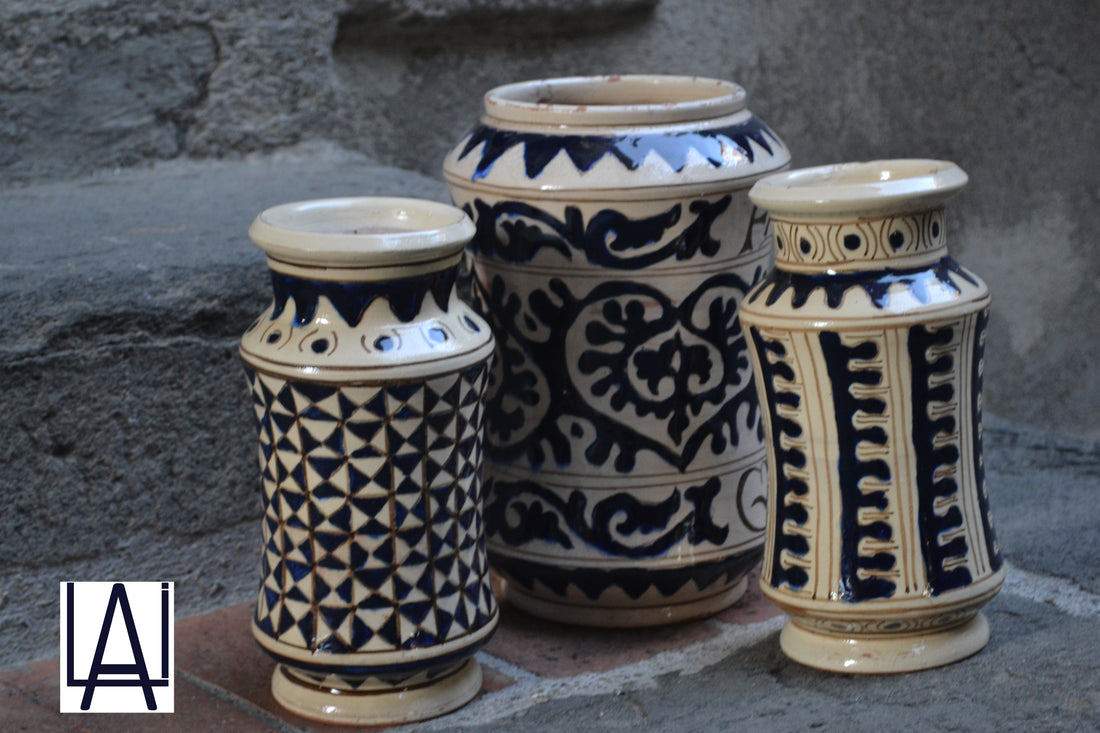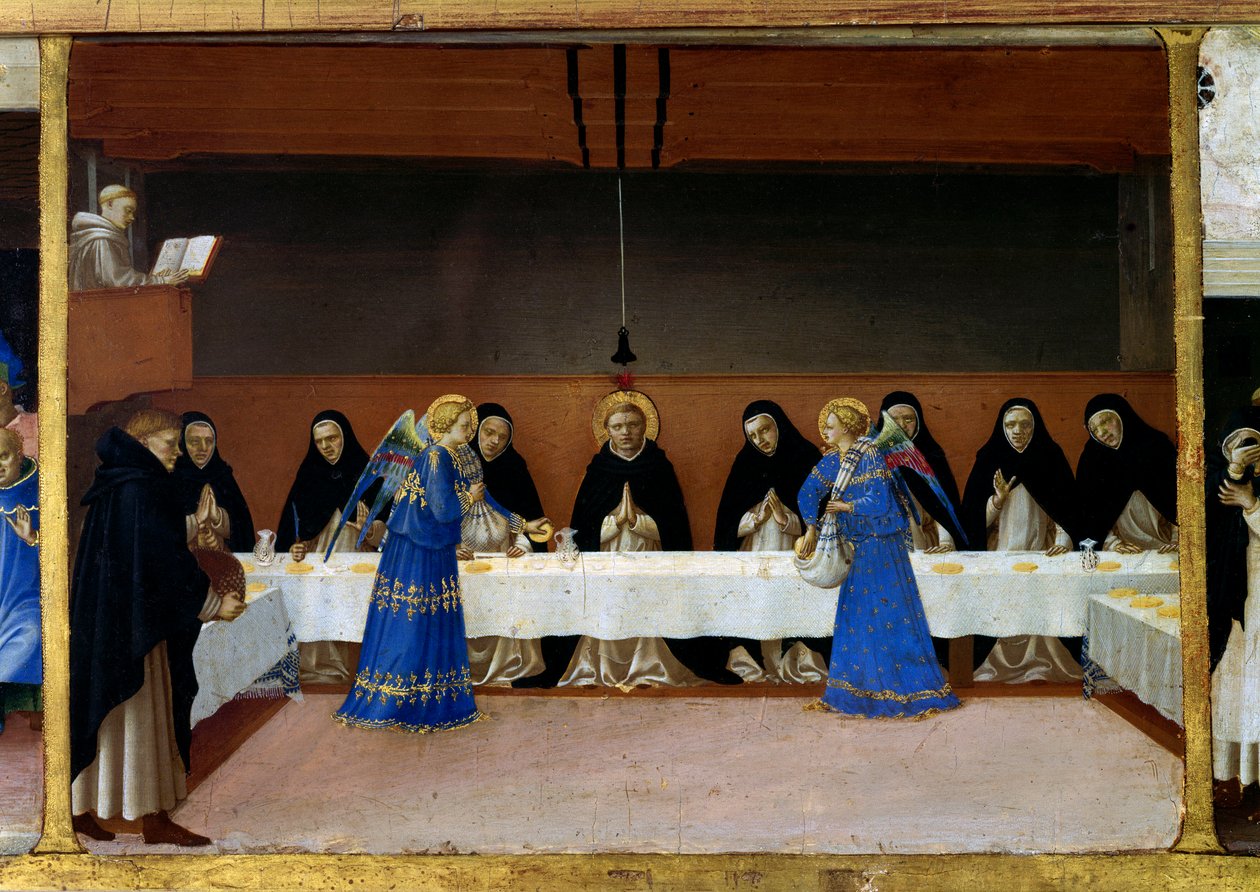
Zaffera Maiolica: A Jewel of Italian Ceramics
Share
This article is an excerpt from the original piece published on Art-Test (La tecnica perduta della zaffera), with additional content from ARTXXI.
“Those who want to achieve great things must pay special attention to details.” This phrase, attributed to poet Paul Valéry, captures the spirit behind the invention of zaffera maiolica by Tuscan ceramicists. These striking ceramics, produced in limited regions of the Italian peninsula over a brief period, boast an elegance and craftsmanship that brought them instant success and popularity among the wealthy households of the 15th century.
What Made Zaffera Unique?
Zaffera maiolica is characterised by a striking two-tone contrast between a white, tin-glazed base and bold, raised cobalt-blue decorations with a glassy sheen. Part of its appeal was the unique raised texture and intense blue hue, setting it apart from other ceramics of the time.
These maiolica pieces even appear in period paintings, highlighting their cultural significance. Renowned painter Fra Angelico depicted them with meticulous detail in social scenes like Saint Dominic and His Companions, while Bicci di Lorenzo included them in his artwork The Miracle of Saint Nicholas. This attention from prominent artists speaks to the high regard in which these ceramics were held.
Fra Angelico, Coronation of the Virgin, predella painting, St. Dominic and his Companions Fed by Angels, 1434-35, tempera on panel, 213 x 211 cm, Musée du Louvre, Paris (Photo: meisterdrucke)
Origins and Spread of Zaffera
Initially created in the Florentine and Sienese regions, zaffera techniques later spread to Upper Lazio, Faenza, and Umbria. Among all these, the zaffera of Viterbo is considered the most prestigious for its fine craftsmanship and distinct aesthetic.
The decorations on zaffera maiolica typically feature a central motif — often animals like dogs and birds, or more rarely, fish — surrounded by elegant patterns. These surrounding decorations were highly varied, including floral and vegetal motifs, tendrils, “wolf’s teeth,” droplets, and oak leaves with acorns or berries. However, the designs were purposefully two-dimensional, without shading, allowing the bold, raised blue sections to stand out sharply.
Regional Styles and Forms
Regional styles within Italy displayed subtle differences in the use of zaffera. In Tuscany, maiolica surfaces were often fully decorated, while Faenza potters preferred to frame their decorations within borders in brown manganese or turquoise glaze. Viterbo zaffera, on the other hand, typically covered the entire surface with finer, more delicate patterns.

Examples of Faenza maiolica (a), Viterbo maiolica (b), and Tuscan maiolica (c).
Evolution and Decline of Zaffera Techniques
The production of zaffera was brief, due to two primary factors: the high cost of cobalt blue and the difficulty of achieving the technique’s desired effect. Furthermore, as the Renaissance progressed, ceramic styles began to evolve. By the mid-16th century, Italian ceramicists were increasingly influenced by Classical and mythological themes, moving away from the earlier emphasis on geometric and floral designs. New techniques and pigments emerged, and the labour-intensive zaffera a rilievo process gradually declined as artisans sought to experiment with more intricate painted designs.
Moreover, alternative blue pigments and enamels from other parts of Europe became available, further reducing reliance on the expensive and geographically limited cobalt supply from Persia. As a result, zaffera ceramics became less common, though they remained a valuable style symbolising the height of Italian maiolica craftsmanship.
Rediscovery and Legacy of Zaffera Ceramics
During the 19th and 20th centuries, zaffera maiolica gained renewed interest among art historians and collectors who recognised its significance in the history of Italian ceramics. Museums and collectors started to acquire these pieces, appreciating their distinctive textures and vibrant colours, as well as their embodiment of a specific period in Italian art.
Today, original zaffera ceramics are highly sought after, and many contemporary artisans create zaffera-inspired designs as a homage to this ancient Italian craft. These works not only showcase Italy's artistic ingenuity but also highlight the lasting impact of international trade on European decorative arts. The legacy of zaffera ceramics stands as a testament to the cultural and artistic interactions that defined the Italian Renaissance, leaving a lasting imprint on the history of European ceramics.
For those interested in acquiring a reproduction of this exquisite and uniquely textured decorative art, be sure to explore the creations of our artisan, Daniela Lai.





